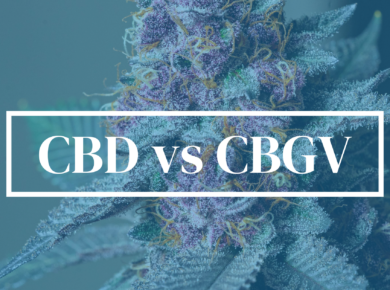In the intriguing world of cannabinoids, understanding the distinct roles and attributes of CBDa (Cannabidiolic Acid) and CBT (Cannabicitran) becomes pivotal.
CBDa, the precursor to the widely recognized cannabinoid CBD (Cannabidiol), plays a crucial role in the biosynthesis of cannabigerolic acid (CBGa) within both hemp and cannabis plants. The transition from CBDa to CBD is facilitated through decarboxylation, in which it sheds its carboxyl group upon exposure to heat or sunlight.
Conversely, CBT, a lesser-known cannabinoid, is thought to materialize as other cannabinoids deteriorate over time. Although research on CBT is not as extensive as that of CBD or CBDa, it’s acknowledged to be present in both hemp and cannabis plants.
In essence, while CBDa serves as a pathway to CBD, transforming under particular conditions, CBT is believed to originate as other cannabinoids undergo degradation.
Many States allow hemp derived cannabinoids under the 2018 Farm Bill as long as they contain less than .3% D9 THC. Some States have explicitly banned cannabinoids like Delta 8, so check your local rules and regulations before purchasing.
Here’s the rules for Kush.com and more details
Frequently Asked Questions (FAQs)
- What Is the Nature of CBDa and CBT? CBDa, or Cannabidiolic Acid, found in raw cannabis plants, metamorphoses into CBD when subjected to heat. CBT, or Cannabicitran, is a relatively obscure cannabinoid, currently under research for understanding its properties and potential applications.
- How Are CBDa and CBT Extracted? Employing methods like CO2 and ethanol extraction, both CBDa and CBT can be extracted from the hemp plant, utilizing pressurized carbon dioxide or ethanol, respectively, to isolate the cannabinoids.
- Are Some Hemp Strains Rich in CBDa and CBT? While most strains exhibit only trace amounts of CBT, strains rich in CBDa are more prevalent owing to its role as a precursor to CBD, one of the most abundant cannabinoids in hemp.
- Interaction with the Endocannabinoid System: How Does It Happen? CBDa is known to inhibit the COX-2 enzyme, associated with inflammation responses, interacting with the body’s intricate endocannabinoid system. CBT’s interaction with this system remains under research.
- Is Co-Usage of CBDa and CBT Possible? Indeed, numerous products feature a full spectrum of cannabinoids, encompassing both CBDa and CBT. The “entourage effect” theory suggests that these cannabinoids enhance each other’s effects, though comprehensive research is still pending.
Shop




